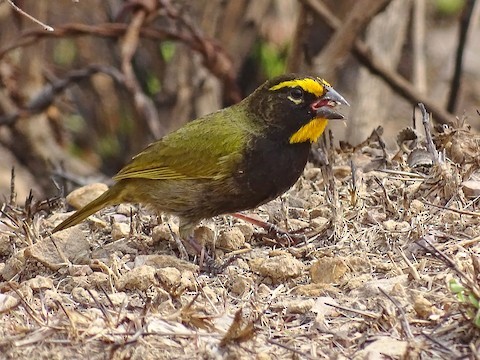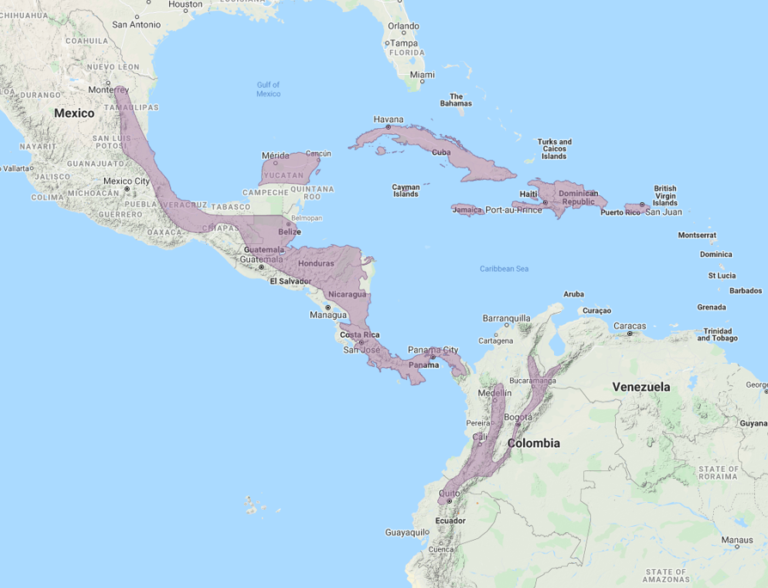Birdfinding.info ⇒ Generally common across most of its range in semiopen woodlands and edge habitats with tall grass, including agricultural areas, towns, and gardens.
Yellow-faced Grassquit
Tiaris olivaceus
Middle America, northwestern South America, and the Greater Antilles. Inhabits both dry and humid areas across a wide elevational range from sea level to highlands, but reaches peak abundance in humid foothills.
In Middle America, on the Caribbean slope from northeastern Mexico (central Nuevo León), including the Yucatán Peninsula and Cozumel, and more locally on the Pacific slope from Guatemala, south to eastern Panama.
In South America, mainly Colombia in Andean foothills and middle elevations and the Cauca and Magdalena valleys from Antioquia, Norte de Santander, and the western Venezuelan highlands (to Mérida), south into northwestern Ecuador (where it is increasing and expanding south).
In the West Indies, on Cuba, Isla de la Juventud, the Cayman Islands, Jamaica, Hispaniola, Puerto Rico, and their satellite islands, east to Culebra and Vieques.
Since the early 1990s, has become a somewhat regular (but less than annual) vagrant to southern Texas and Florida.
In Hawaii, an introduced population has been tenuously established on Oahu since the 1970s, occurring locally in foothills of the Wai’anae and Ko’olau Ranges.
Identification
Male is distinctive, with a unique facial pattern dominated by bold yellow eyebrows and throat patch, bordered with black and olive. Also has a yellow crescent under the eye.
Otherwise mostly shades of olive, greener above and grayer below, with a variable amount of black in the face and underparts.
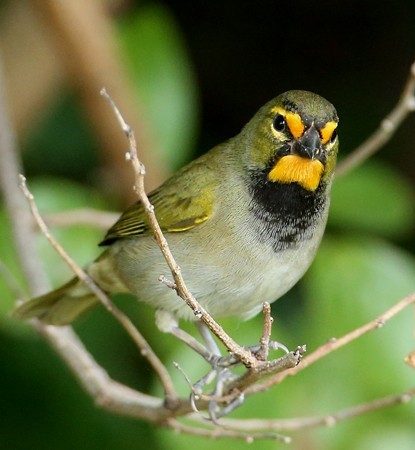
Yellow-faced Grassquit, male with small black bib typical of Antillean populations. (Cayo Coco, Ciego de Ávila, Cuba; December 10, 2014.) © Hal and Kirsten Snyder
The extent of the black coloration on the underparts varies individually and geographically: usually just a bib on the chest of West Indian birds, but much more extensive on some continental birds—some are almost completely black below, and on much of the head.
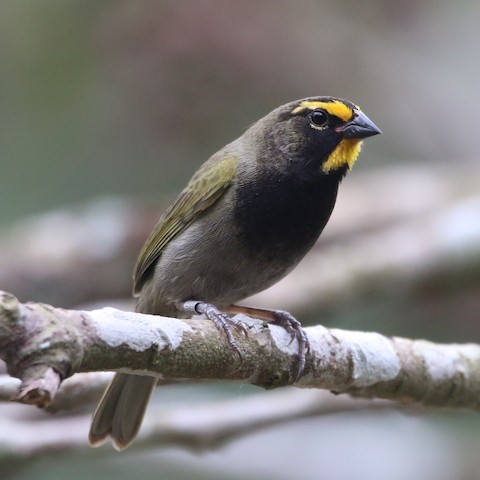
Yellow-faced Grassquit, male with full black bib typical of continental populations. (Black Rock Lodge, Belize; March 1, 2020.) © Isaias Morataya
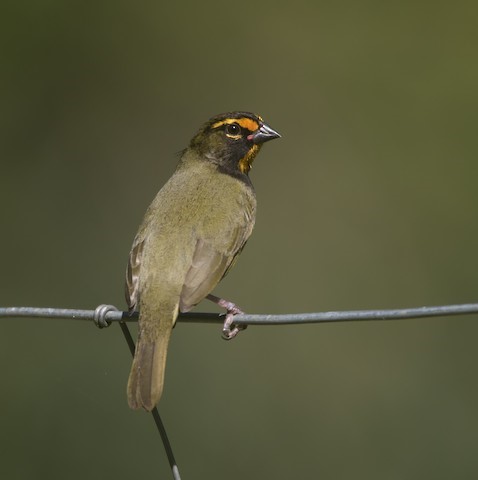
Yellow-faced Grassquit, male. (Black Rock Lodge, Belize; February 10, 2021.) © Isaias Morataya
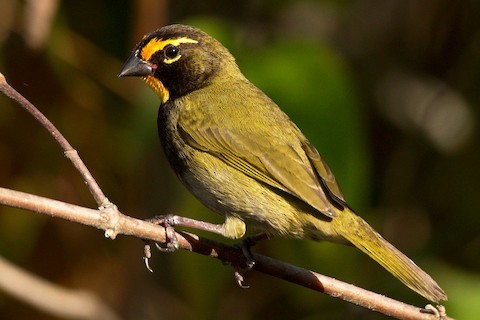
Yellow-faced Grassquit, male. (Thousand Foot Falls, Belize; December 26, 2019.) © Eli Jahsua Miller
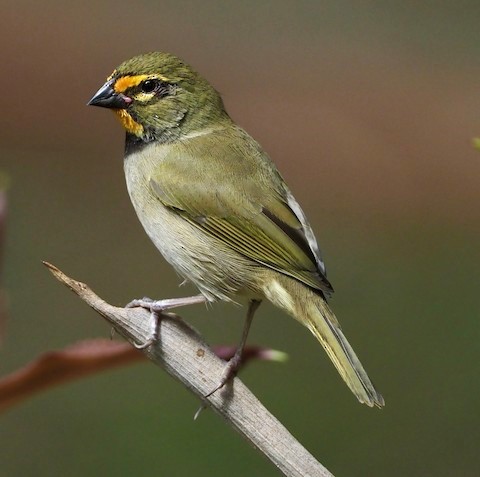
Yellow-faced Grassquit. (San Gervasio, Cozumel, Quintana Roo, Mexico; February 4, 2014.) © Tim Avery

Yellow-faced Grassquit, male. (National Botanical Garden, Santo Domingo, Dominican Republic; November 4, 2019.) © Yve Morrell
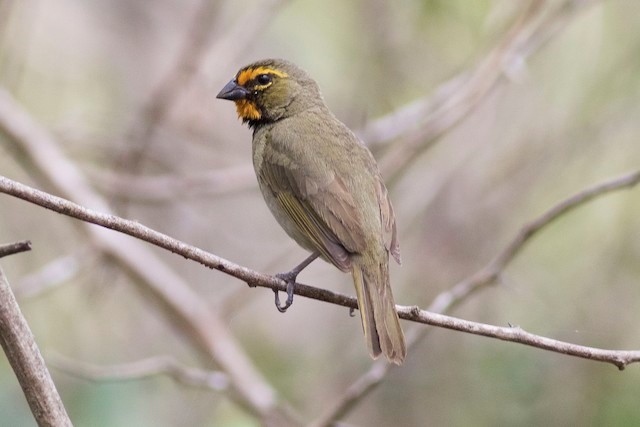
Yellow-faced Grassquit, male. (Queen Elizabeth II Botanic Park, Grand Cayman; March 26, 2017.) © Charmaine Anderson
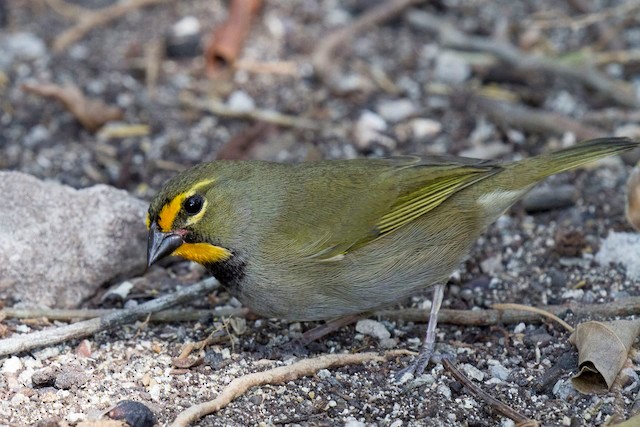
Yellow-faced Grassquit. (Cueva del Jabali, Cayo Coco, Ciego de Ávila, Cuba; March 31, 2017.) © Kristof Zyskowski

Yellow-faced Grassquit, male. (Punta Cana, Dominican Republic; December 12, 2015.) © Geoffrey Groom

Yellow-faced Grassquit, male. (El Jaguar Reserve, Nicaragua; December 20, 2015.) © Jessie Stuebner
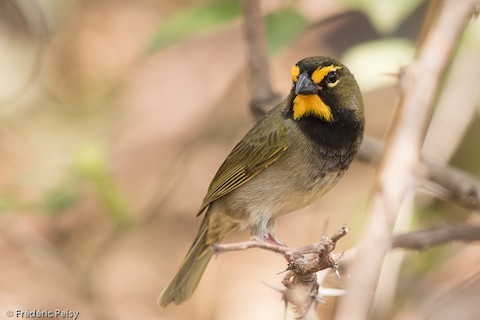
Yellow-faced Grassquit, male. (Puerto Escondido, Dominican Republic; March 29, 2017.) © Frédéric Pelsy
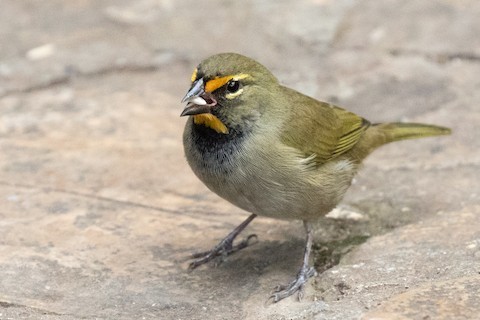
Yellow-faced Grassquit, male. (Las Terrazas, Sierra del Rosario Biosphere Reserve, Artemisa, Cuba; December 11, 2018.) © Garrett Lau

Yellow-faced Grassquit, male. (Rocklands Bird Sanctuary, Jamaica; August 31, 2018.) © Piet Grasmaijer

Yellow-faced Grassquit, male. (Sleeping Giant Rainforest Lodge, Belize; August 4, 2017.) © Corey Finger
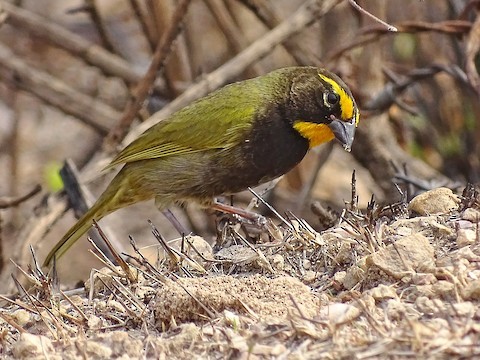
Yellow-faced Grassquit, male. (Altos de Santa Rosa, Honduras; April 30, 2016.) © Alfonso Auerbach
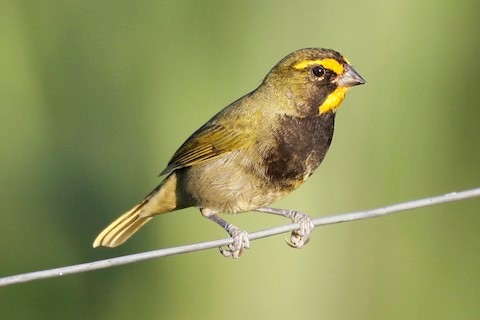
Yellow-faced Grassquit, male. (Venecia, Antioquia, Colombia; December 31, 2018.) © Zach Schwartz-Weinstein
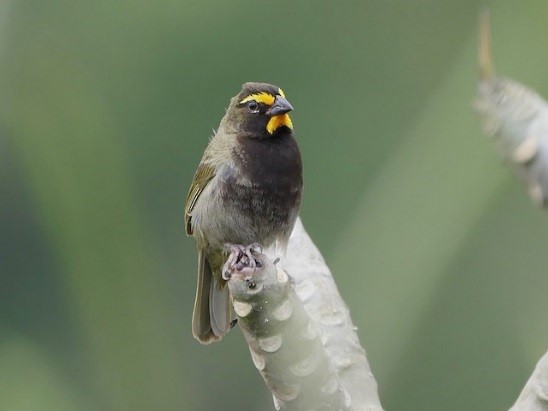
Yellow-faced Grassquit, male. (Finca Lilo, Buenos Aires, Costa Rica; January 8, 2018.) © Jeffrey Thomas
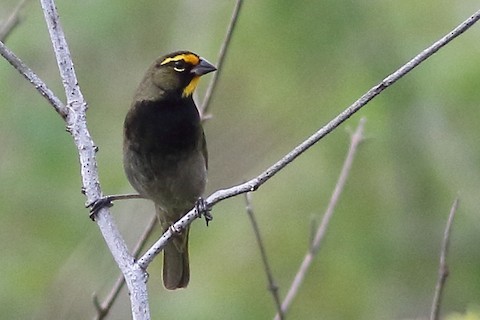
Yellow-faced Grassquit, male. (El Cedral, Cozumel, Mexico; February 1, 2016.) © Mark L. Hoffmann
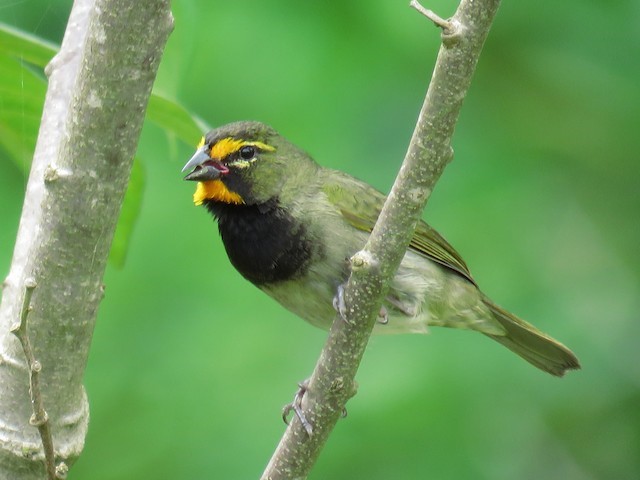
Yellow-faced Grassquit, male with limited black bib typical of Antillean populations. (Fermate, Haiti; May 14, 2017.) © Mark Salvidge
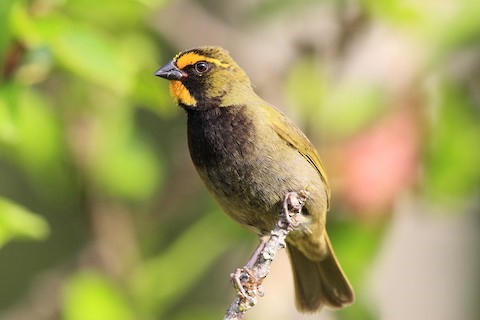
Yellow-faced Grassquit, male. (Cerro Azul, Panama; April 16, 2013.) © Josef Widmer
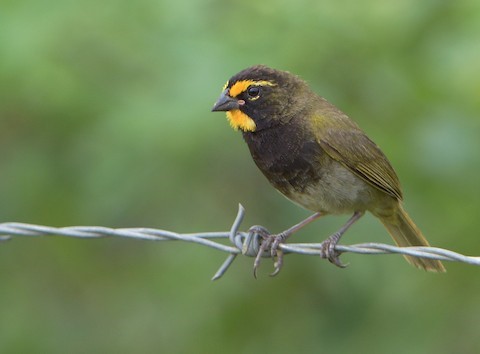
Yellow-faced Grassquit, male. (Santa Ana, Petén, Guatemala; July 11, 2018.) © Jorge Dangel

Yellow-faced Grassquit, male. (Jardín, Antioquia, Colombia; April 15, 2019.) © David Monroy Rengifo
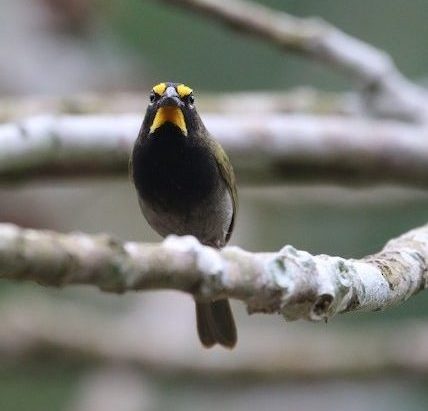
Yellow-faced Grassquit, male. (Black Rock Lodge, Belize; March 1, 2020.) © Isaias Morataya
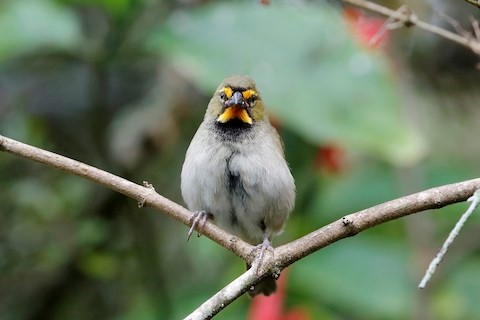
Yellow-faced Grassquit, male. (Rocklands Bird Sanctuary, Jamaica; February 28, 2020.) © Holger Teichmann
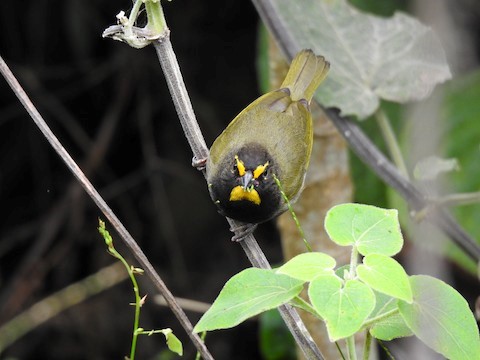
Yellow-faced Grassquit, male. (Cañón del Combeima, Tolima, Colombia; May 28, 2019.) © Gustavo Barragán Mosquera
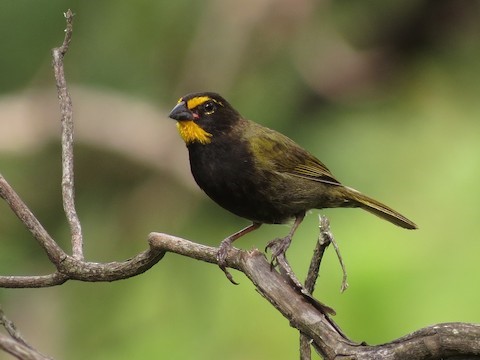
Yellow-faced Grassquit, male. (Las Crucitas, Francisco Morazán, Honduras; October 7, 2014.) © John van Dort

Yellow-faced Grassquit, male. (Altos de Santa Rosa, Honduras; April 30, 2016.) © Alfonso Auerbach

Yellow-faced Grassquit, male. (Arenal Observatory Lodge, Costa Rica; December 11, 2018.) © David Zittin
Females and immatures are generally drab olive, paler and grayer below, with a muted version of the male’s facial pattern.

Yellow-faced Grassquit, male and female. (Las Terrazas, Sierra del Rosario Biosphere Reserve, Artemisa, Cuba; January 11, 2016.) © Michael J. Good

Yellow-faced Grassquit, female. (Rocklands Bird Sanctuary, Jamaica; February 15, 2014.) © Eric W. Greisen
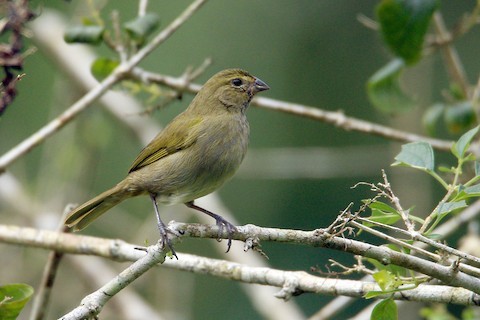
Yellow-faced Grassquit, female. (Hotel Linda Vista, Alajuela, Costa Rica; December 6, 2018.) © Graeme Colmer
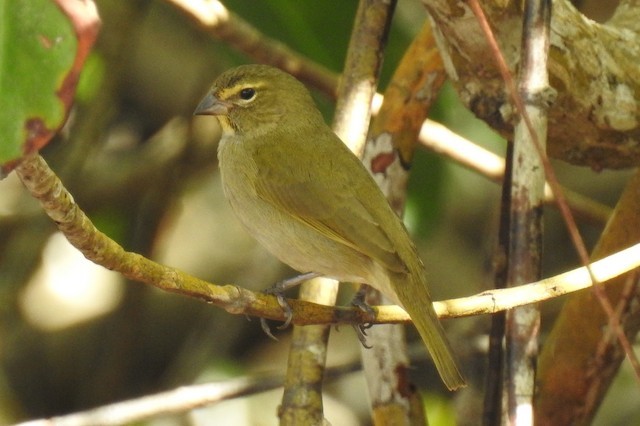
Yellow-faced Grassquit, female. (Cozumel, Mexico; January 24, 2018.) © John Terry
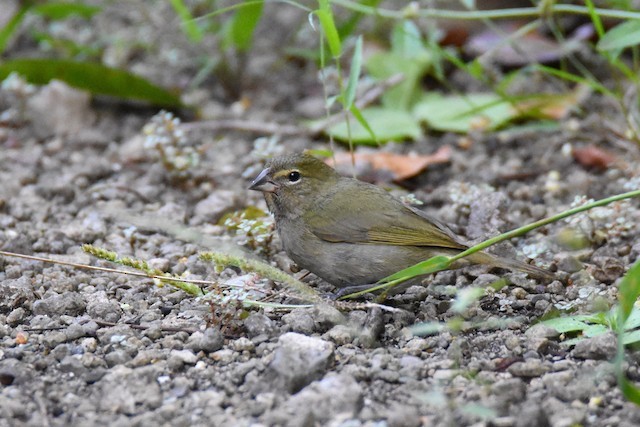
Yellow-faced Grassquit, female or immature male. (Cozumel, Mexico; December 30, 2016.) © Luke Berg
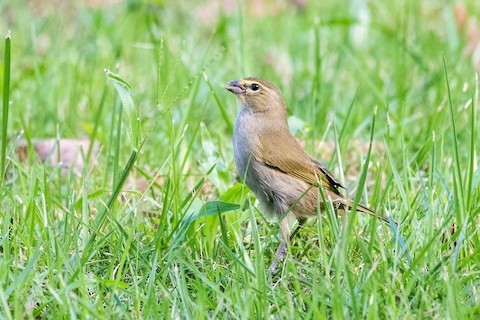
Yellow-faced Grassquit, female. (National Botanical Garden, Santo Domingo, Dominican Republic; November 18, 2018.) © Roberto Dall Agnol
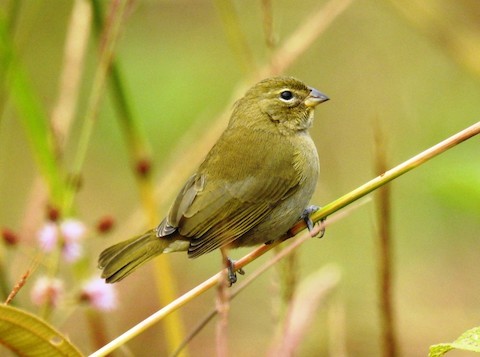
Yellow-faced Grassquit, female. (Conal Trincheros, Honduras; December 27, 2020.) © Francisco Dubón
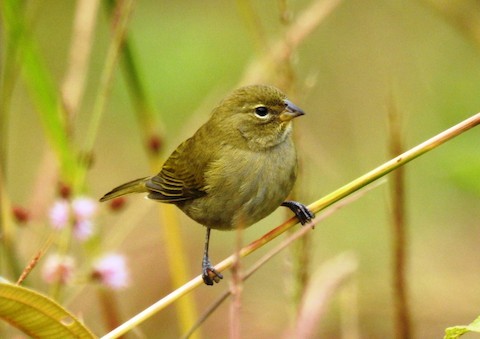
Yellow-faced Grassquit, female. (Conal Trincheros, Honduras; December 27, 2020.) © Francisco Dubón
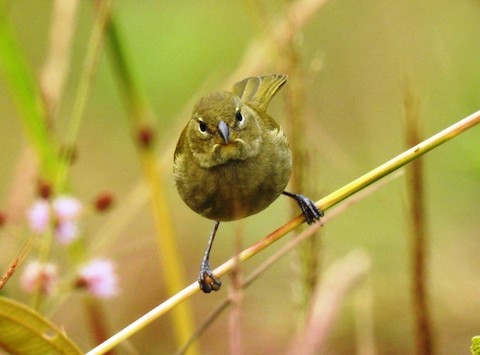
Yellow-faced Grassquit, female. (Conal Trincheros, Honduras; December 27, 2020.) © Francisco Dubón
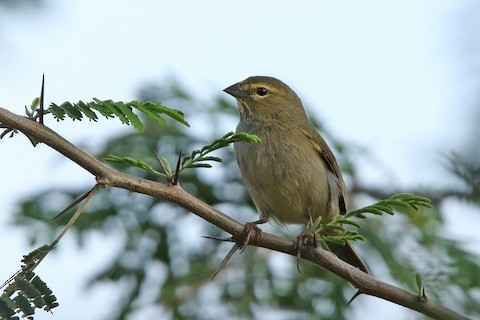
Yellow-faced Grassquit, female. (Puerto Escondido, Dominican Republic; April 9, 2019.) © Volker Hesse
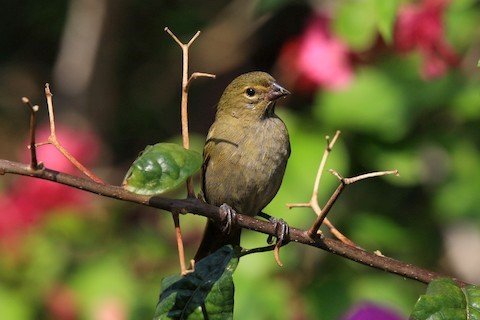
Yellow-faced Grassquit, female. (Cerro Azul, Panama; April 16, 2013.) © Josef Widmer

Yellow-faced Grassquit, female. (Mastic Trail, Grand Cayman; February 8, 2020.) © Denny Swaby

Yellow-faced Grassquit, female. (Rocklands Bird Sanctuary, Jamaica; November 28, 2016.) © Dan J. MacNeal

Yellow-faced Grassquit, female. (Santa Cruz, Jamaica; February 1, 2019.) © Matthew Grube
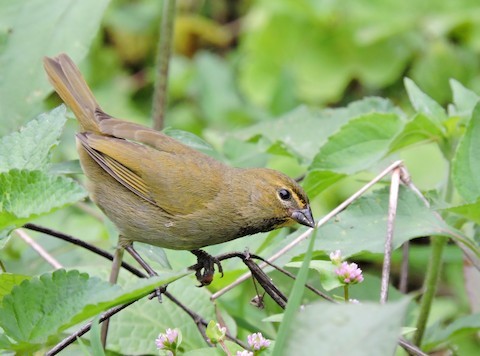
Yellow-faced Grassquit, immature male. (Jardín, Antioquia, Colombia; October 18, 2014.) © Nimali Digo & Thilanka Edirisinghe
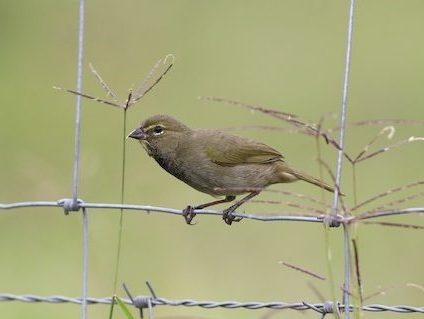
Yellow-faced Grassquit, immature male. (Tapantí National Park, Costa Rica; November 21, 2018.) © Blair Dudeck
Notes
Polytypic species consisting of five recognized subspecies.
References
Ascanio, D., G.A. Rodriguez, and R. Restall. 2017. Birds of Venezuela. Christopher Helm, London.
BirdLife International. 2018. Tiaris olivaceus. The IUCN Red List of Threatened Species 2018: e.T22723603A132167494. https://dx.doi.org/10.2305/IUCN.UK.2018-2.RLTS.T22723603A132167494.en. (Accessed May 18, 2021.)
eBird. 2021. eBird: An online database of bird distribution and abundance. Cornell Lab of Ornithology, Ithaca, N.Y. http://www.ebird.org. (Accessed May 18, 2021.)
Fagan, J., and O. Komar. 2016. Peterson Field Guide to the Birds of Northern Central America. Houghton Mifflin Harcourt, New York.
Garrigues, R., and R. Dean. 2014. The Birds of Costa Rica: A Field Guide (Second Edition). Cornell University Press.
Howell, S.N.G., I. Lewington, and W. Russell. 2014. Rare Birds of North America. Princeton University Press, Princeton, N.J.
Howell, S.N.G., and S. Webb. 1995. A Guide to the Birds of Mexico and Northern Central America. Oxford University Press, Oxford.
Kirwan, G.M., A. Levesque, M. Oberle, and C.J. Sharpe. 2019. Birds of the West Indies. Lynx Edicions, Barcelona.
Latta, S., C. Rimmer, A. Keith, J. Wiley, H. Raffaele, K. McFarland, and E. Fernandez. 2006. Birds of the Dominican Republic and Haiti. Princeton University Press.
McMullan, M., and T. Donegan. 2014, Field Guide to the Birds of Colombia (Second Edition). Fundación Proaves de Colombia, Bogotá.
Raffaele, H., J. Wiley, O. Garrido, A. Keith, and J. Raffaele. 1998. A Guide to the Birds of the West Indies. Princeton University Press, Princeton, N.J.
Ridgely, R.S., and P.J. Greenfield. 2001. The Birds of Ecuador, Volume II: Field Guide. Cornell University Press.
Ridgely, R.S., and J.A. Gwynne. 1989. A Guide to the Birds of Panama (Second Edition). Princeton University Press, Princeton, N.J.
Xeno-Canto. 2021. Yellow-faced Grassquit – Tiaris olivaceus. https://www.xeno-canto.org/species/Tiaris-olivaceus. (Accessed May 18, 2021.)
